Your Guide to Storing Leftovers Safely
You cooked, and there are leftovers. Fantastic! There’s a cooking-free night in your future. But how do you safely store and use this food to feed your family so that your hard work pays off? The tips for food safety with leftovers gives you all you need for leftover success.
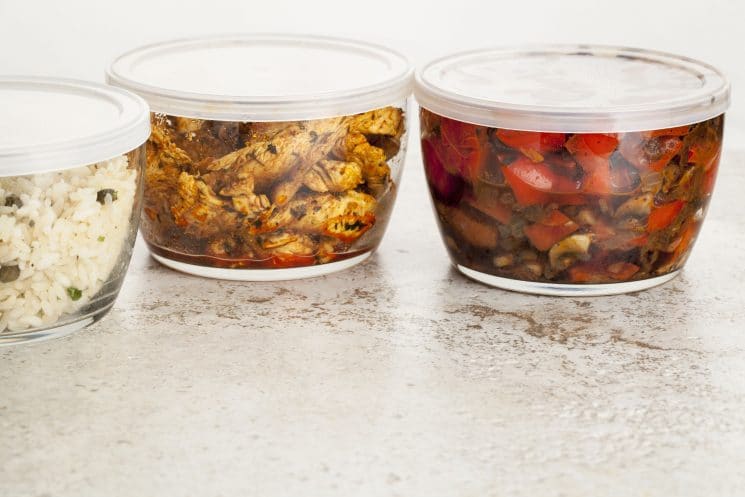
Food Safety with Leftovers: Day 1
- First, make sure foods are cooked properly the first time around. Use the graphic below to determine the minimum internal temperature for safety.
- Avoid leaving food in the danger zone (shown in the graphic above), which is between 40 to 140 degrees Fahrenheit. Bacteria grow rapidly in this temperature range. If a food stays in this zone for two hours or more, toss it. If the temperature is over 90 degrees Fahrenheit (for instance, at a picnic), discard foods left out for an hour or more.
- Keep hot foods hot using slow cookers, chafing dishes, warming trays, etc.
- Keep cold foods cold by placing food into containers surrounded by ice.
- Cool foods as fast as you can. After cooking a large pot of food or large piece of meat, divide the food into shallow dishes and refrigerate to cool the food more rapidly. You can also aid cooling by cooling the food in an ice water bath, but make sure that you don’t get the ice water in your container of food.
- Label all foods that you refrigerate and freeze with a name and a date.
- Store foods in air tight containers or wrap in air tight packaging, and make sure that you have good air flow throughout your refrigerator and freezer by not overfilling.
- Separate leftovers into portion sizes that you are likely to use. For instance, you may want single servings versus freezing in a gallon size freezer bag to use as a family dinner.
Refrigerate or Freeze
- If you refrigerate, make sure the refrigerator temperature is at or below 40 degrees Fahrenheit and use Super Healthy Kids Refrigerator Storage Guide to see how long different foods are safe in the refrigerator.
- If you freeze, make sure that your freezer is at 0 degrees Fahrenheit and use Super Healthy Kids Freezer Storage Guide to see how long different foods should be stored in the freezer.
- Keep leftovers together in the refrigerator and the freezer. Keep the older leftovers, which you should use first, in the front. Another helpful hint is to keep a list on your freezer of all leftover meals and dates made so that you can scratch them off of the list as you use them.
Defrost Frozen Food Properly
- In the refrigerator. This thawing method takes the longest but leftovers stay safe the whole time. While some foods may defrost completely overnight, some foods require a day or two. Large items take longer. A rule of thumb is one day of refrigerator defrost time for each five pounds of weight. Make sure that you put any food that you are thawing into a container as close to the bottom of the refrigerator as possible to prevent drippings from contaminating other foods. After thawing, use the food within three to four days or refreeze.
- In cold water. Put the food in a leak proof package or plastic bag and immerse in cold water. Change the water every thirty minutes, and once the food is thawed, cook it immediately. Foods defrosted using the cold water method should be cooked before refreezing.
- In the microwave. This method is the fastest. Heat the food until it reaches 165 degrees Fahrenheit. If foods thawed in the microwave have been heated to this safe temperature, they can be refrozen.
- If you do not have time to defrost your leftovers, it is safe to reheat frozen leftovers in a saucepan, oven or in the microwave. Reheating this way will take longer than if the food was defrosted first.
- It is considered safe to refreeze any food that has been defrosted and heated to a temperature of 165 degrees. Also, if you have a large container of leftovers and only need to use a portion of it, it is safe to thaw the leftovers in the refrigerator, remove the portion that you need, then refreeze the remainder of the thawed leftovers immediately.
- Use a food thermometer to make sure that your leftovers are reheated to the proper temperature of 165 degrees Fahrenheit.
Microwave Reheating Guidelines:
- Rotate for even heating.
- Arrange food evenly on a microwave safe covered glass or ceramic dish.
- Add liquid if needed.
- Vent the lid or wrap to allow steam to vent.
- Use a food thermometer to test the temperature in several spots after a rest period.
Suggested Methods for Reheating
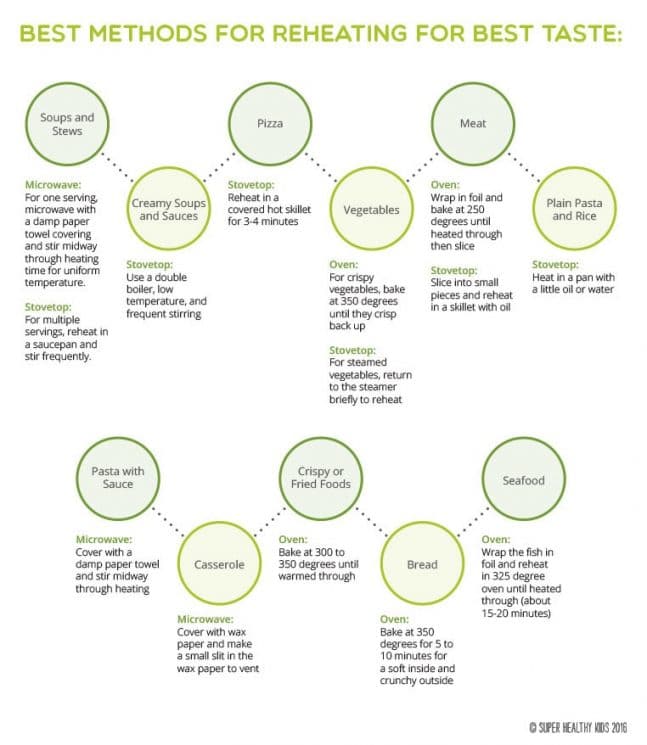
Leftovers can give a weary parent a night off from cooking, so retain the quality by storing and heating your leftovers properly!
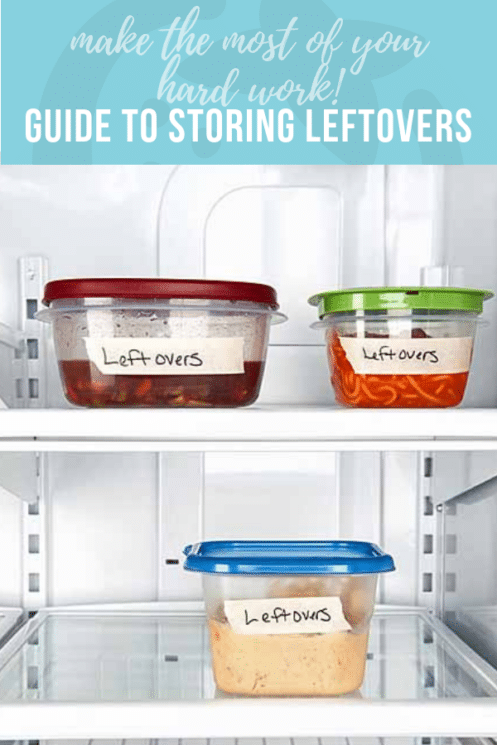
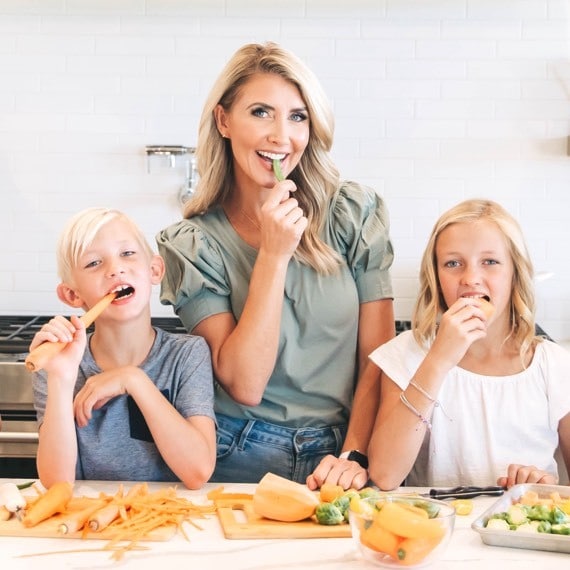
Natalie Monson
I'm a registered dietitian, mom of 4, avid lover of food and strong promoter of healthy habits. Here you will find lots of delicious recipes full of fruits and veggies, tips for getting your kids to eat better and become intuitive eaters and lots of resources for feeding your family.
Learn More about Natalie1 Comments
▼
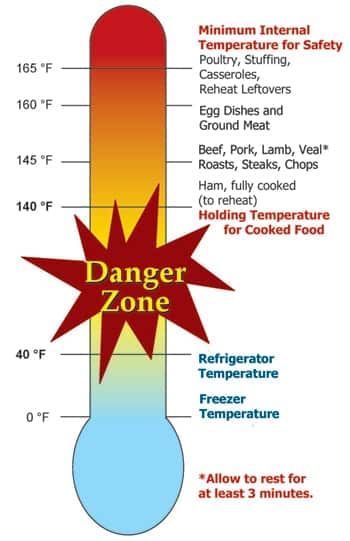
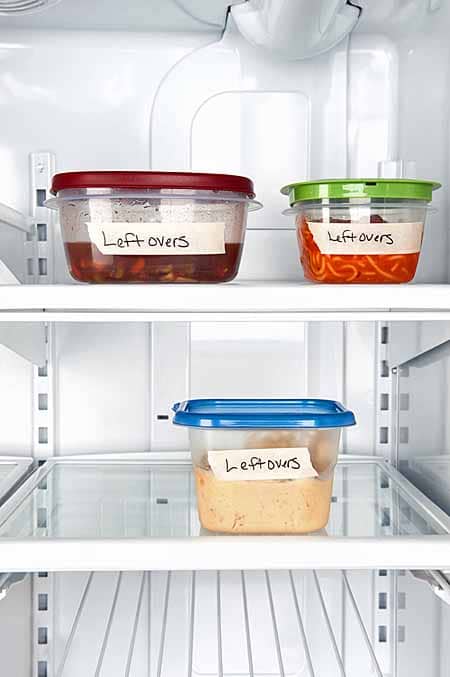

Thanks for sharing! It’s very useful!
Comments are closed.